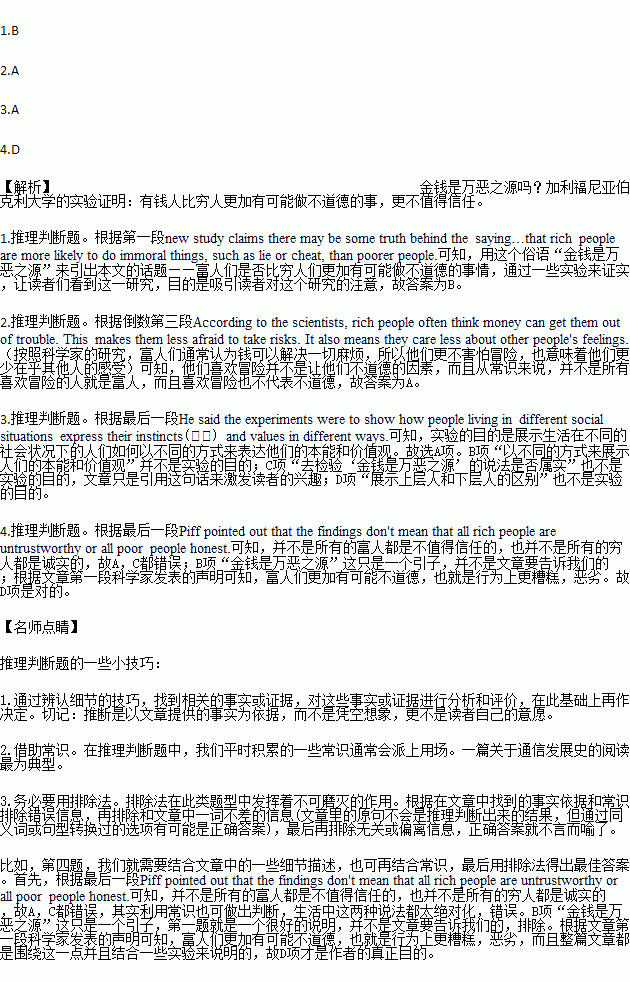题目内容
Money is the root of all evil (邪恶) and new study claims there may be some truth behind the saying. Scientists at the University of California Berkeley, US, announced on February 27 that rich people are more likely to do immoral things, such as lie or cheat, than poorer people. The scientists did a series of eight experiments. They published their findings online in the Proceedings of the National Academy of Sciences (PNA《美国国家科学院院刊》).
They carried out the first two experiments from the sidewalk near Berkeley. They noted that drivers of newer and more expensive cars were more likely to cut off other cars and pedestrians at crosswalks. Nearly 45 percent of people driving expensive cars ignored a pedestrian compared with only 30 percent of people driving more modest cars.
In another experiment, a group of college students was asked if they would do immoral things in various everyday situations. Examples included taking printer paper from work and not telling a salesperson when he or she gave back more change. Students from higher-class families were more likely to act dishonestly.
According to the scientists, rich people often think money can get them out of trouble. This makes them less afraid to take risks. It also means they care less about other people's feelings.
Finally, it just makes them greedier. "Higher wealth status seems to make you want even more, and that increased want leads you to bend the rules or break the rules to serve your self-interest," said Paul Piff, lead scientist of the study.
Piff pointed out that the findings don't mean that all rich people are untrustworthy or all poor people honest. He said the experiments were to show how people living in different social situations express their instincts (本能) and values in different ways.
1.By saying "money is the root of all evil", the author wants to ________.
A. link wealth with bad behavior
B. draw readers' attention to the research
C. show how the saying proves the findings
D. defend rich people who do immoral things
2.According to the scientists, which is NOT the factor that makes rich people immoral?
A. They welcome risks.
B. They have more desires.
C. They believe money talks.
D. They become more selfish.
3.Why did the scientists do the experiments?
A. To show how social status affects people's morality.
B. To show people's instincts and values in different ways.
C. To test whether the saying "money is the root of all evil" is true.
D. To show the difference between higher-class people and lower-class people.
4.What does the passage really want to show us?
A. The poor are respectable.
B. Money is the root of all evil.
C. All rich people are untrustworthy.
D. The rich are more likely to act badly.
 金牌教辅培优优选卷期末冲刺100分系列答案
金牌教辅培优优选卷期末冲刺100分系列答案
